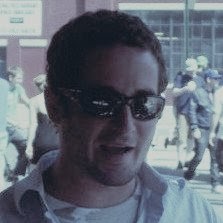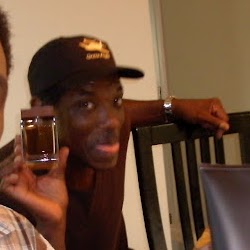Jeffrey Todd Hastings
age ~49
from Lexington, KY
- Also known as:
-
- Jeffrey T Hastings
- Todd J Hastings
- Jtodd Hastings
- Tod D Hastings
- Hastings J Todd
- Phone and address:
-
609 Centennial Ln, Lexington, KY 40502
8592662673
Jeffrey Hastings Phones & Addresses
- 609 Centennial Ln, Lexington, KY 40502 • 8592662673
- 356 Cassidy Ave, Lexington, KY 40502
- 101 Hanover Ave, Lexington, KY 40502
- Cambridge, MA
- 305 Memorial Dr, Cambridge, MA 02139
Work
-
Position:Private Household Service Occupations
Education
-
Degree:Graduate or professional degree
Resumes

Jeffrey Hastings
view sourceWork:
City Houston Animal Control
Education:
Sterling High School
Skills:
Management
Leadership
Staff Development
Team Building
Microsoft Office
Leadership
Staff Development
Team Building
Microsoft Office

Jeffrey Hastings
view source
Hotel Services Manager At Quest Cleaners
view sourceLocation:
Greater Boston Area
Industry:
Hospitality
Medicine Doctors

Jeffrey Hastings
view sourceSpecialties:
Cardiovascular Disease
Work:
Dallas VA Medical Center Cardiology
4500 S Lancaster Rd FL 5, Dallas, TX 75216
2148571472 (phone), 2143021341 (fax)
4500 S Lancaster Rd FL 5, Dallas, TX 75216
2148571472 (phone), 2143021341 (fax)
Education:
Medical School
University of Texas Southwestern Medical Center at Dallas
Graduated: 2003
University of Texas Southwestern Medical Center at Dallas
Graduated: 2003
Procedures:
Cardiac Rehabilitation
Cardiac Stress Test
Cardioversion
Echocardiogram
Electrocardiogram (EKG or ECG)
Cardiac Stress Test
Cardioversion
Echocardiogram
Electrocardiogram (EKG or ECG)
Conditions:
Acute Myocardial Infarction (AMI)
Atrial Fibrillation and Atrial Flutter
Heart Failure
Ischemic Heart Disease
Acute Renal Failure
Atrial Fibrillation and Atrial Flutter
Heart Failure
Ischemic Heart Disease
Acute Renal Failure
Languages:
English
French
Spanish
French
Spanish
Description:
Dr. Hastings graduated from the University of Texas Southwestern Medical Center at Dallas in 2003. He works in Dallas, TX and specializes in Cardiovascular Disease.
Us Patents
-
System And Method For Fabrication And Replication Of Diffractive Optical Elements For Maskless Lithography
view source -
US Patent:7348104, Mar 25, 2008
-
Filed:Oct 2, 2003
-
Appl. No.:10/677173
-
Inventors:Dario Gil - Cambridge MA, US
Jeffrey T. Hastings - Cambridge MA, US
James G. Goodberlet - Melrose MA, US
Rajesh Menon - Boston MA, US
David J. Carter - Cambridge MA, US
Henry I. Smith - Sudbury MA, US -
Assignee:Massachusetts Institute of Technology - Cambridge MA
-
International Classification:G02B 27/44
G02B 27/42
G02B 5/18 -
US Classification:430 4, 430 11, 430394, 359558, 359565, 359573
-
Abstract:A method is disclosed for forming an array of focusing elements for use in a lithography system. The method involves varying an exposure characteristic over an area to create a focusing element that varies in thickness in certain embodiments. In further embodiments, the method includes the steps of providing a first pattern via lithography in a substrate, depositing a conductive absorber material on the substrate, applying an electrical potential to at least a first portion of the conductive absorber material, leaving a second portion of the conductive material without the electrical potential, and etching the second portion of the conductive material to provide a first pattern on the substrate that is aligned with the first portion of the conductive absorber material.
-
Spatial-Phase Locking Of Energy Beams For Determining Two-Dimensional Location And Beam Shape
view source -
US Patent:7417234, Aug 26, 2008
-
Filed:May 17, 2005
-
Appl. No.:11/130892
-
Inventors:Jeffrey T. Hastings - Lexington KY, US
James G. Goodberlet - Melrose MA, US
Feng Zhang - Cambridge MA, US
Henry I. Smith - Sudbury MA, US -
Assignee:Massachusetts Institute of Technology - Cambridge MA
-
International Classification:H01J 37/304
-
US Classification:250397, 250396 R, 2504911, 2504922, 25049223, 25049221
-
Abstract:A method or system of spatial-phase locking a beam used in maskless lithography provides a fiducial grid with a single spatial-period, the fiducial grid being rotated at an angle with respect to a direction of scanning the beam; detects a signal generated in response to the beam being incident upon the fiducial grid; determines frequency components of the detected signal; and determines a two-dimensional location of the beam from phases of two determined fundamental frequency component. The method or system further determines a size of the beam from relative amplitudes of the determined fundamental and harmonic frequency components and/or determine a shape of the beam from relative amplitudes of the determined fundamental and harmonic frequency components. The method or system corrects a deflection of the beam in response to the determined two-dimensional location, and/or adjusts the size of the beam in response to the determined size, and/or adjusts the shape of the beam in response to the determined shape. If the method or system spatial-phase locks a plurality of beams used in maskless lithography, a fiducial grid with a varying spatial-period is utilized.
-
Dynamic Alignment Monitoring System For On-Vehicle Disk Brake Lathe
view source -
US Patent:7861625, Jan 4, 2011
-
Filed:Oct 24, 2008
-
Appl. No.:12/257429
-
Inventors:Christopher L. Greenwald - Waban MA, US
Jeffrey P. Hastings - Hanover NH, US -
Assignee:Pro-Cut Licensing Company, LLC - West Lebanon NH
-
International Classification:B23B 25/06
B23B 5/04 -
US Classification:82112, 82118
-
Abstract:A dynamic alignment monitoring system allows an operator to monitor the misalignment of an on-vehicle disk brake lathe with respect to a vehicle axis about which the disk to be machined rotates, and can allow the operator to discontinue further alignment when appropriate in order to speed the overall time of the alignment process. The system processes signals from an angular rate sensor and a tachometer, using a scaling routine to derive a LRO value corresponding to the LRO of the disk which would result from machining in the current alignment condition. A representation of the derived LRO value is displayed to the operator. An operator override can allow the operator to discontinue further alignment adjustments when an acceptable alignment condition is indicated. The system can aid the operator by also presenting a representation of an acceptable LRO value for the particular vehicle being serviced.
-
Reporting System For On-Vehicle Brake Lathe
view source -
US Patent:8245609, Aug 21, 2012
-
Filed:Feb 3, 2010
-
Appl. No.:12/699091
-
Inventors:Christopher L. Greenwald - Waban MA, US
Jeffrey P. Hastings - Hanover NH, US -
Assignee:Pro-Cut Licensing Company, LLC - West Lebanon NH
-
International Classification:B23B 5/04
B23B 1/00 -
US Classification:82112, 82 111, 82 47, 82118
-
Abstract:A reporting system, employing a microprocessor, tracks the operation of an on-vehicle brake lathe and provides records of the resurfacing operations performed by the lathe. Identification of the vehicle and wheel position of a brake disk to be resurfaced are inputted using an operator interface, and stored in a temporary memory. When tool bits of the lathe are positioned to set a depth of cut, a thickness monitor indicates the resulting thickness for the brake disk, which is compared to a minimum thickness specification for the inputted vehicle and wheel position to determine whether the disk can be resurfaced to meet the specification. If so, a cutting operation evaluator monitors a continuity checker that is responsive to contact of the tool bits and the disk to determine when the resurfacing operation is complete, at which time the collected data can be reported.
-
Optical Waveguide With Non-Uniform Sidewall Gratings
view source -
US Patent:20040037503, Feb 26, 2004
-
Filed:May 28, 2003
-
Appl. No.:10/446245
-
Inventors:Jeffrey Hastings - Lexington KY, US
Michael Lim - Cambridge MA, US
Henry Smith - Sudbury MA, US -
International Classification:G02B006/34
G02B006/10 -
US Classification:385/037000, 385/130000
-
Abstract:A diffraction grating of non-uniform strength is introduced into an optical waveguide by modulating its width. The waveguide may be fabricated using one of several planar processing techniques. Varying the size, position, and/or thickness of the grating teeth provides the desired variation of grating strength. Certain functional variations of grating strength suppress side-lobe levels in the grating reflection and transmission spectra. This process, termed apodization, is necessary for precise wavelength filtering and dispersion compensation. If desired, different periodicity gratings can be introduced in each side of the waveguide, multiple periodicities can be superimposed, the grating can be angled with respect to the waveguide, and the grating period and phase can be varied.
-
System, Device, And Method For Determination Of Intraocular Pressure
view source -
US Patent:20110160561, Jun 30, 2011
-
Filed:Dec 30, 2010
-
Appl. No.:12/982110
-
Inventors:Jeffrey Todd Hastings - Lexington KY, US
E. Britt Brockman - Louisville KY, US
Ingrid L. St. Omer - Lexington KY, US
John C. Wright - Louisville KY, US -
Assignee:BROCKMAN HOLDINGS LLC - Louisville KY
THE UNIVERSITY OF KENTUCKY RESEARCH FOUNDATION - Lexington KY -
International Classification:A61B 3/16
-
US Classification:600398
-
Abstract:A system for determination of intraocular pressure includes: an intraocular pressure sensor; a light source illuminating the sensor with one or more wavelengths of light; and a detector that measures emitted light from the sensor. The sensor includes a substrate member, a spacer member, and a flexible membrane, which define a sealed cavity. The flexible membrane moves in response to intraocular pressure changes. A device for measuring intraocular pressure includes: the sensor; an anchoring member attached to the sensor for immobilizing the sensor in an eye; and a protective member attached to the anchoring member and covering the sensor to prevent contact between the flexible membrane and the eye. A method for determination of intraocular pressure includes: placing the sensor in an eye; illuminating, with a light source, the sensor with one or more wavelengths of light; and detecting, with a detector, a resultant light that contains information about intraocular pressure.
-
Particle-Beam Induced Processing Using Liquid Reactants
view source -
US Patent:20110293847, Dec 1, 2011
-
Filed:May 28, 2010
-
Appl. No.:12/789457
-
Inventors:Jeffrey Todd Hastings - Lexington KY, US
-
International Classification:C23F 17/00
C23C 14/14
C23C 14/06 -
US Classification:427524, 427523, 427527, 427531
-
Abstract:A system or method of charge particle beam induced materials processing is disclosed. A charged particle beam (electron or ion) is focused at the interface of a substrate and a bulk liquid. The beam induces a localized chemical reaction that results in deposition or etching of deterministic micro- or nano-scale structures. The bulk liquid reactants permit the deposition and etching of metals, semiconductors, and insulators. A charged particle transparent membrane separates the liquid reactant from the vacuum chamber in which the beam is transmitted. In many cases, bulk liquid reactants permit processing of materials with much higher purity that of the prior art and permit processing of materials previously unavailable in charged particle beam processes.
-
Device For Securing Additional Devices In An Eye Without Interfering With Vision
view source -
US Patent:20210298946, Sep 30, 2021
-
Filed:Dec 31, 2020
-
Appl. No.:17/139205
-
Inventors:- Lexington KY, US
Jeffrey Todd Hastings - Lexington KY, US
Carlos Andres Jarro - Lexington KY, US
James L. Russell - Lexington KY, US -
International Classification:A61F 9/00
A61B 3/16
A61B 5/145
A61B 3/02
A61B 5/00 -
Abstract:An eye implantation device has a body including a support system adapted to engage at three points with an iridocorneal angle of an anterior chamber of an eye into which the device is implanted.
Isbn (Books And Publications)

Shirley And Silly Sam: In the Land of the Lost Squirrels
view sourceAuthor
Jeffrey Hastings
ISBN #
0595365825
Name / Title
Company / Classification
Phones & Addresses
MILLBROOK PROPERTIES, LLC
Myspace
Googleplus

Jeffrey Hastings
Work:
School Library Journal/SLJ.com/Digital Shift - Columnist
Howell Public Schools - Teacher
Howell Public Schools - Teacher
Education:
University at Buffalo, The State University of New York, Buffalo State College, University of Phoenix, Spring Arbor University, Michigan State University
Tagline:
I'm an extremely handsome, utterly brilliant and incredibly accomplished pathological liar.
Bragging Rights:
I've been around the block a couple of times.

Jeffrey Hastings
Work:
APTAR - Material handler (2013)
Education:
Harvard high school

Jeffrey Hastings

Jeffrey Hastings

Jeffrey Hastings

Jeffrey Hastings

Jeffrey Hastings

Jeffrey Hastings
Classmates

Jeffrey Hastings
view sourceSchools:
Garfield High School Terre Haute IN 1965-1969
Community:
Charlie Barth, John Smith, Luann King

Jeffrey Hastings
view sourceSchools:
Kossuth High School Kossuth MS 2002-2006
Community:
Shirley Woods, Sarah Dilworth, Don Anderson

Jeffrey Hastings
view sourceSchools:
Biggersville Elementary School Corinth MS 1975-1979
Community:
Michael Bo, Willene Hunnewell, Willene Carpenter, Kristie Fiveash, Cathy Sanders

Jeffrey Hastings
view sourceSchools:
Elverado High School Elkville IL 1975-1979
Community:
Steve Cobin, John Rowland

Jeffrey Hastings
view sourceSchools:
Doniphan High School Doniphan NE 1986-1990
Community:
Billy Gregg, Shauna Coffin, Russ Cochell, Karen Shultz, Jon Thomas, Barbra Brandon, Robin Zalud, Stacy Dreesen, Eric Paczosa

Jeffrey Hastings | Lake P...
view source
Jeffrey Hastings | Merril...
view source
Doniphan High School, Don...
view sourceGraduates:
Jeff Whitaker (1980-1984),
Danny Hastings (1981-1985),
Jeffrey Hastings (1986-1990),
James Rainforth (1993-1997)
Danny Hastings (1981-1985),
Jeffrey Hastings (1986-1990),
James Rainforth (1993-1997)

Jeffrey Hastings
view source
Jeffrey Hastings
view source
Jeffrey Hastings
view source
Jeffrey Hastings
view source
Jeffrey Hastings
view source
Jeffrey Hastings
view source
Jeffrey H. Hastings
view source
Jeffrey Gene Hastings
view sourceFlickr
Youtube
News

The Campaign of Hillary and Mrs. Clinton
view source- trail her small motorcade across the Granite State. On Monday, U.S. politics editor David Martosko and a photographer traveling with him, Jeffrey Hastings, caught the Scooby van going 92 miles per hour in a 65 mph zone on Interstate Highway 89. The Drudge Report linked to the story within minutes.
- Date: Apr 26, 2015
- Category: U.S.
- Source: Google

Democrats, Republicans lawyer-up for US election
view source- There will be up to 7,000 observers as well as the 4,000 election workers at polling station in Cuyahoga county, the most populous county in the key state of Ohio, said Jeffrey Hastings, chairman of the Cuyahoga Board of Elections.
- Date: Nov 04, 2012
- Source: Google
Get Report for Jeffrey Todd Hastings from Lexington, KY, age ~49















